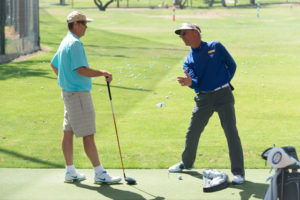…Good players want to be coached. Great players want to be told the truth
– Doc Rivers Head Coach Los Angeles Clippers
When you do something for the number of years that I have you learn a lot and see patterns. I think Doc Rivers has it right. Good players want to be coached.
I have been hanging around coaching since I was a kid. I started taking golf lessons in 1969 and took somewhere in the neighborhood of 500 lessons over the next fifteen years. Every Saturday. I still go see my coach when I am training.
Since I turned pro, I have probably given over 30,000 lessons.
I’ve had several teachers really. All were very good players and had a complete command of the subject. The best ones told the truth and NEVER blew smoke.
In golf, we tend to be called “teachers”. We are expected to help by instructing. This is certainly one part of the craft. I teach people stuff all the time: everything from etiquette to correct ball striking techniques. It’s plain old telling or sharing of information. I know something the student needs to know. So, I share it with them.
Coaching is something a bit different. Coaching is the art of giving the student the responsibility and the tools they need: concepts, drills, games, exercises, etc. Coaching insists the student do the discovering. It involves asking questions, coaxing answers, getting the player to experiment, and find out for themselves what’s happening and what’s best. I guide and kind of stay out of it. I get the student to study. This begins with their wanting to be coached.
Are you ready to study and be coached? That would be good.
We’ll make a good team.

MadsenGolf bmadsen@sycuanresort.com



